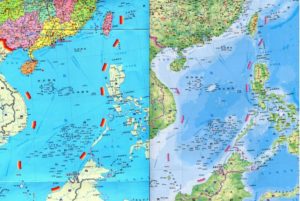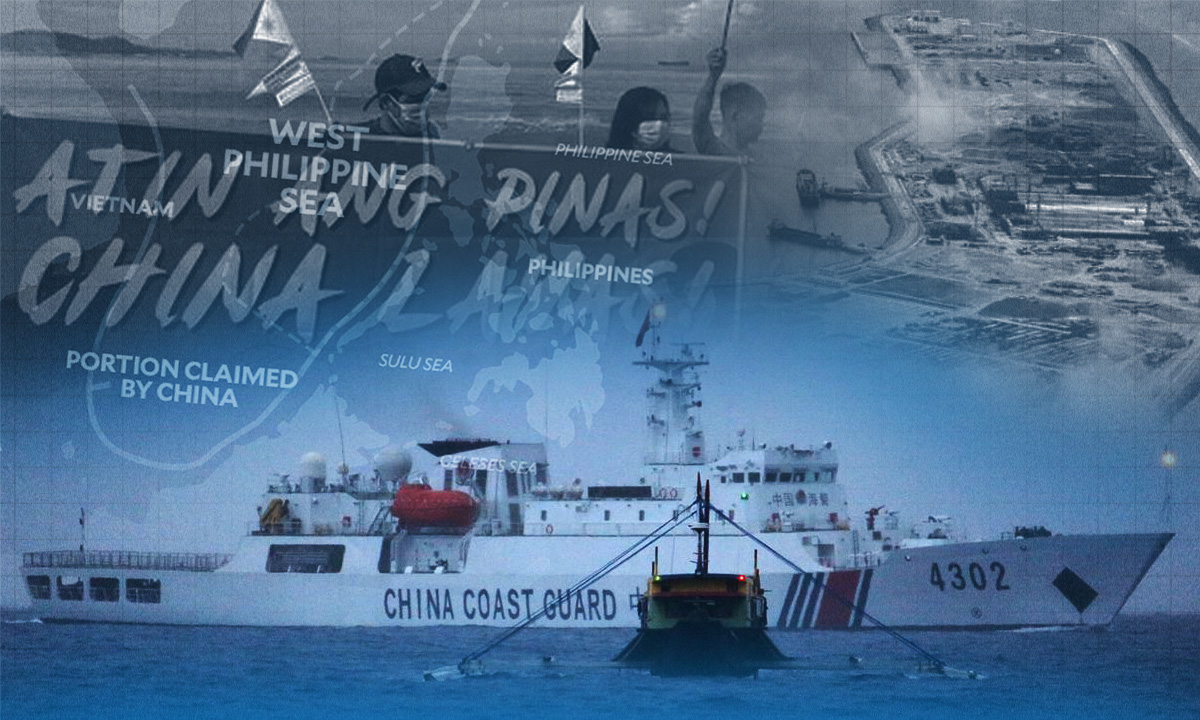ASIA GEOPOLITICS | MANILA, Philippines- China’s WPS lies: From baseless dashed line to ‘indisputable sovereignty’

MANILA, Philippines—Even with the Permanent Court of Arbitration’s (PCA) decision that China’s nine, now 10-dash line, is without legal basis, the Chinese government continues to insist that it has sovereign rights over almost 90 percent of the South China Sea (SCS), warning other countries against violating its “indisputable sovereignty.”
In 2023 alone, China has repeatedly accused the Philippines of encroaching in Chinese territory, going to the extent of blaming the Philippines for hostile actions taken by China inside Philippine exclusive economic zone (EEZ), like ramming Filipino vessels in Ayungin (Second Thomas) Shoal, which China calls Ren’ai Jiao.
RELATED STORY: China continues to blame PH for provoking WPS dispute
As stressed by retired Supreme Court Senior Associate Justice Antonio Carpio in his book “The South China Sea Dispute: Philippine Sovereign Rights and Jurisdiction in the West Philippine Sea,” China’s 10-dash line claim, which covers about 85.7 percent of the SCS, or 3 million square kilometers, is the “main driver of the SCS dispute.”
He explained that in 2009, to protest the submission of Vietnam and Malaysia of their extended continental shelf (ECS) claims to the United Nations (UN), China submitted a map of its 10-dash line, asserting “indisputable sovereignty” over all the islands and ‘adjacent’ waters enclosed by the line,” and “sovereign rights and jurisdiction” over the “relevant” waters within the dashed line.
“This was the first time that China officially announced its […] claim to the world,” Carpio said, pointing out, however, that still, China did not give the coordinates of the dashes. “Neither did China explain the meaning or basis of the dashes, or the meaning of ‘adjacent’ and ‘relevant’ waters,” which are not terms used in the UN Convention on the Law of the Sea (Unclos).
RELATED STORY: PH not provoking conflict in West Philippine Sea — AFP
So in 2016, deciding on the case filed by the Philippines against China, the PCA said China’s claim to historic rights beyond its territorial sea is contrary to Unclos, and as explained by Carpio, China’s dashed line has no legal basis and cannot generate any maritime entitlement, such as territorial sea, EEZ, and ECS.
He pointed out that the nine, now 10-dash line, is “bereft of basis in international law,” saying that the well-entrenched doctrine is that “land dominates the sea,” and all maritime entitlements must be measured from baselines along the coast of continental land, island or rock above water at high tide.
China’s line, he said, does not comply with this basic requirement of Unclos.
Fighting back
As explained by Carpio, with China’s dashed line claim, what is at stake for the Philippines in the SCS is about 80 percent of its EEZ comprising 381,000 square kilometers of maritime space and 100 percent of its ECS, estimated at over 150,000 square kilometers of maritime space. “Either the Philippines keeps these maritime entitlements or loses them to China.”
Effectively, China’s nine, now 10-dash line claim, “encroaches on over 531,000 square kilometers of Philippine EEZ and ECS, including all the fishery, oil, gas, and mineral resources found within this vast area, which is larger than the total land area of the Philippines of about 300,000 square kilometers,” Carpio said.
This is why for Julio Amador III, president of the Foundation for National Interest and founder of FACTS Asia, documenting China’s aggression in the SCS and filing diplomatic protests are critical contents of the Philippines’ “toolkit” in responding to the aggression of China inside the EEZ of the Philippines.
As previously stressed by the National Security Council, “let us not fall into the[ir] trap,” pointing to China’s engagement in “psychological or cognitive warfare” to prevent Filipinos from standing as one against Chinese encroachment on the West Philippine Sea, which is clearly a part of the EEZ of the Philippines.
Even the Philippine Coast Guard has committed to expose China’s aggression, describing the strategy as really effective. As pointed out by Dr. Chester Cabalza, president of the think tank International Development and Security Cooperation, the Philippines should have an uncompromising attitude towards the preservation of its national sovereignty.
Dissecting lies
A week ago, Rep. France Castro (ACT Teachers) hit China for its “delusional” claims, saying that “China is again spewing lies to counter the international backlash it is now under due to the exposure of its aggressive and dangerous actions in the WPS,” pointing to China’s statement that Ayungin Shoal is its territory and that the Philippines cannot erect structures in the shoal.
READ: Lawmaker hits China’s ‘delusional’ claim to West PH Sea
As repeatedly claimed by China, the shoal, which it calls Ren’ai Jiao, is an integral part of its Nansha Qundao, or Spratlys, which is composed of islands, islets, cays, and over 100 reefs. The Spratlys, which is in the western section of the province of Palawan, is referred to by the Philippines as Kalayaan Island Group.
Remember, however, that Ayungin Shoal, which is only 200 kilometers away from Palawan province, is a low tide elevation, as decided by the PCA, and since it is within 200 nautical miles from the baselines of the Philippines and beyond 200 nautical miles from the baselines of other states, Carpio said the Philippines has sovereign rights over Ayungin Shoal.
Contrary to China’s statement, too, that the Philippines is provoking conflict by sending construction materials to the BRP Sierra Madre, a dilapidated warship that was intentionally grounded in Ayungin Shoal back in 1999, the Philippines said it has the right to repair or develop the outpost.
While the Armed Forces of the Philippines (AFP) pointed out that its RoRE missions only carry food and other essential provisions, it stressed that since the shoal is within the EEZ of the Philippines, it has the right to repair or develop the BRP Sierra Madre, with General Romeo Brawner Jr., chief of the AFP, saying that “China has no right to tell us not to repair.”
RELATED STORY: DFA: PH Ayungin Shoal missions backed by int’l law
Carpio previously explained that “only the Philippines can erect a structure or artificial island on Ayungin Shoal since under Unclos the coastal state has the exclusive right to erect structures or artificial islands within its EEZ.”
China likewise said the Bajo de Masinloc (Scarborough Shoal), which it calls Huangyan Dao, “has always been China’s territory,” so it has the right to install barriers to “safeguard our territorial sovereignty and maritime rights and interests,” even when it meant preventing Filipino fishermen and their vessels from entering Bajo de Masinloc.
This, despite the shoal being inside the EEZ of the Philippines, and as decided by the PCA and explained by Carpio, China cannot prevent Filipino fishermen from fishing in the territorial sea of the shoal.

@[email protected]



 Memento Maxima Digital Marketing
Memento Maxima Digital Marketing






